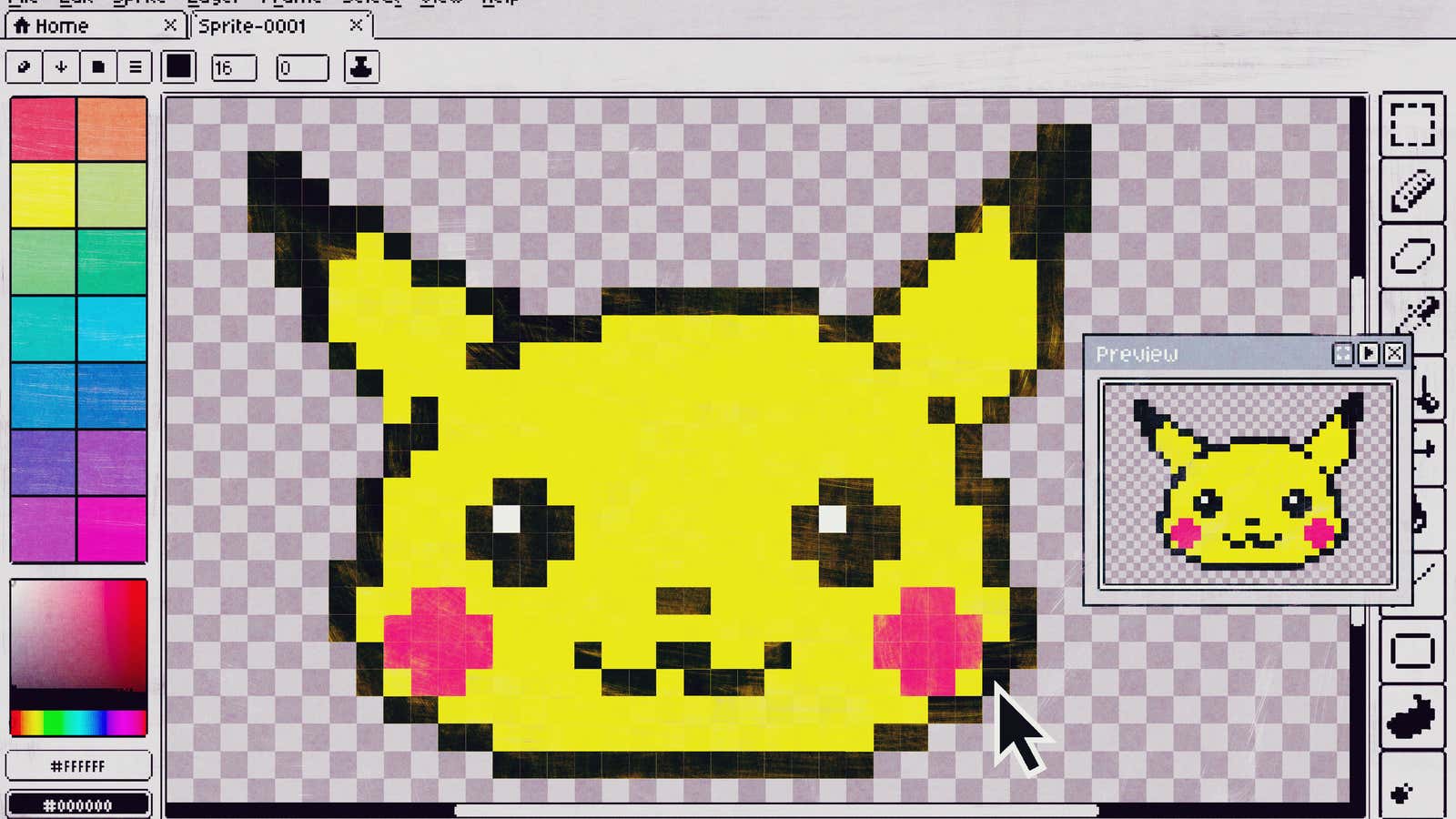Some of the people who make Pokémon fan games are scared, if not a bit angry. They’ve been crafting amazing Pokémon games that rival the official releases for a decade, dodging lawsuits and relying on increasingly dated tools. It’s never been easy, but it’s also never been as stressful as it is today.
Pokémon fan games are more popular than ever before: some of the biggest titles have been played by millions, only to then get shut down by Nintendo. Meanwhile, people who make Pokémon clones that literally include Pikachu manage to sell their wares for a profit. It’s a frustrating situation, as the creators of major fan games spend years developing free homages out of sheer love.
It might seem like fan games are more common now—every few weeks we learn about a cool new project—in the case of Pokémon, fan games have always been a big part of the culture. As a kid, I grew up playing unofficial Pokémon MMOs that dared to go where Game Freak wouldn’t. When I got older and wanted to try competitive Pokémon, I generated a fully-trained team with just a few clicks in a simulator. Everyone I knew played the official games, sure, but after we beat the Elite Four and cartridges offered nothing new, fan games helped keep our enthusiasm alive until the next release. Pokémon fan games have always been there, the wider public is just more aware of them now.
“When I was developing fan games it felt very...underground,” said Stephen McVicker, a professional game developer who cut his teeth making Pokémon fan games.
A crucial revolution for the popularity of Pokémon fan games came with the 2007 creation of Pokémon Essentials, a RPG Maker XP game that allows people to create new adventures with ease.
Pokémon Essentials provides full tilesets, maps, music, and sprites that players can drag and drop onto a canvas. All the classic mechanics necessary to collect and battle Pokémon come packed-in, too. While the tool has a learning curve, for the most part, fans are able to focus more on the plot of their games. Accordingly, some cool recent projects I’ve spotted include narrative concepts like telling battle stories around a camp fire, and staging an attack against the notorious Silph Co. corporation.
“I cannot emphasize this enough: without Pokémon Essentials, it would have been impossible to make Pokémon Uranium, or almost any of the other Pokémon fan games that are out there,” said Voluntary Twitch, the creative director behind Pokémon Uranium, a shuttered fan game that was reportedly downloaded over a million times.
“[It allows] even someone with little to no programming knowledge whatsoever (for example, me) to make a fully-functioning game,” Voluntary Twitch continued. “And in the hands of someone who knows how to use it well...it becomes a powerful tool that can create something truly exceptional.” Uranium, for its part, dazzled fans with the addition of 150 impressively-designed monsters, robust online features, and challenging battles.
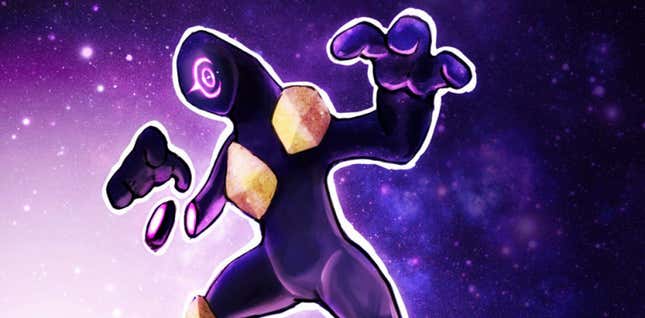
According to Maruno, the current proprietor and developer of Pokémon Essentials, the assets come from the actual games themselves, while the coding and scripts for more granular features are developed in-house, or by the wider community. The tool is distributed for free, though it requires a version of RPG Maker that costs $24.99, which is cheaper than a modern Pokémon game. While it’s impossible to tell how many people have downloaded Pokémon Essentials over the years, the last couple of versions have collectively been downloaded at least 108,000 times, Maruno estimates. On YouTube, a 2013 Pokémon Essentials tutorial has been viewed over 329,000 times. Lots of people have made, or have at least thought about making Pokémon fan games.
Relying on Pokémon Essentials means that most of the community is stuck making 2D Pokémon games, while the official releases have shifted to 3D. This, in turn, influences the nature fan games, both in terms of how they present and how they function.
“[Pokémon essentials is a] hybrid of the Generations 3 and 4 games (Gen 3 for the main gameplay and maps, and Gen 4 for UI and battles),” Maruno said. “The mechanics themselves are either Generation 5 or Generation 6 style, depending on the developer’s choice, so they’re kept up to date. It’s only visually that Pokémon Essentials ‘lags behind.’”

Deo, an administrator on the fan game community Relic Castle, argues that relying on aging software comes with its own set of problems.
“RPG Maker XP is 13 years old as of writing,” Deo said. “Unfortunately this leads to projects built in it not running as smoothly as we’d like, and optimizing is a very daunting task.” Moving on to a newer version of RPG Maker might seem like an obvious solution, except that later entries remove features that fan game creators rely on. Porting Pokémon Essentials is “not all that worth it,” Deo said, because it would take a “colossal effort” to pull it off.
Still, Pokémon Essentials developer Maruno stresses that having to work with older generations is a good thing for newbie game developers, because sprites are “easier to work with than 3D models...given what’s out there, and the remarkably high quality of some of the more prominent fangames, I’d say that Pokémon Essentials helps to show that ‘older’ isn’t necessarily ‘worse.’”
The retro looks certainly haven’t stopped ambitious fan games from gaining traction. Once a game starts blowing up, it’ll be covered by websites like Kotaku, or by YouTubers with large followings. “It used to be a lot more insular, confined to individual communities and forums which each had their own rules and cultures,” said Voluntary Twitch. “I think it was the popularity of video platforms like YouTube and Twitch.tv that allowed Pokemon fan games to reach beyond their small community audience and made them more accessible to the average user.”
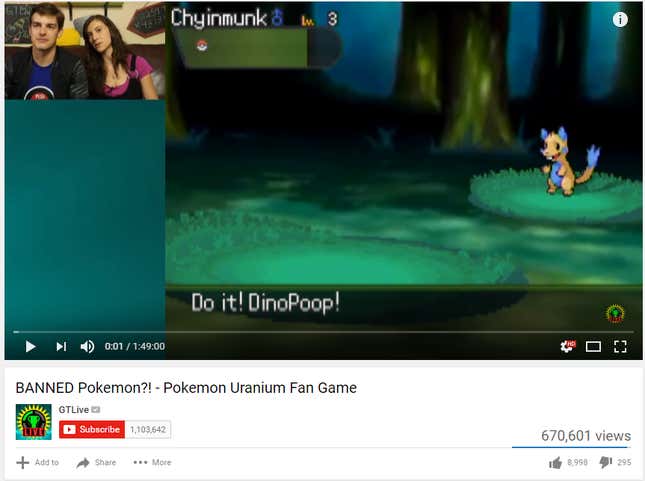
“I remember tuning in to The Game Theorists’ livestream, which had one point over 30,000 active people watching [my fan game,] which would have been unimaginable until very recently,” Voluntary Twitch said. No longer relegated to niche forums or hardcore followings, modern fan games get more publicity than ever before. That’s part of the problem: the more well-known a project becomes, the more likely it is that it’ll get shut down. Even so, tons of people regularly brave Nintendo’s wrath. The hope is that if a fan game creator doesn’t charge for their title in any way, whether through a Patreon or donations for “server costs,” they’ll be safe. It doesn’t always work out that way, as we’ve seen, but there’s no consistency to what projects get shut down and which ones are allowed to continue updating. The fan games that make the news are a small sliver of what people are making.
“On the PokéCommunity forum (the place where Pokémon Essentials originated), there’s usually two or three new fan games announced every day,” Maruno said. Most of these games never get finished because people lose interest, not because a cease and desist order got sent out.
Some communities like Relic Castle focus on the development of fan games, especially for newbie developers who are looking for constructive feedback. (Relic Castle emphasizes the fact they do not host fan games, merely encourage their discussion.) But the uncertainty surrounding legal threats, coupled with the now explosive popularity of promising fan games, has sent shockwaves through niche Pokémon communities. I spoke to a number of people who seemed spooked or felt weary about the fate of games like Pokémon Uranium and Pokémon Prism. Nobody wants to get wrapped up in a thorny legal battle, naturally.
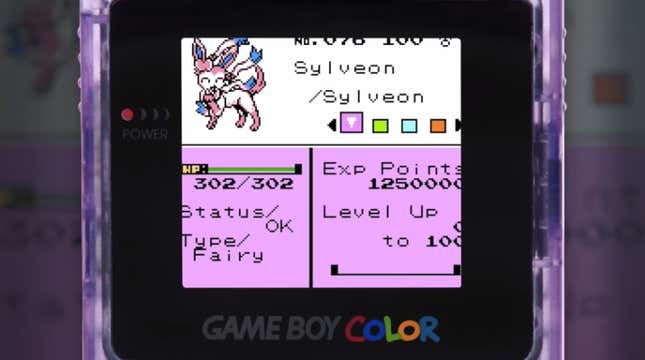
One prominent developer I spoke to, who asked to remain anonymous out of fear of bringing undue attention to his fan game, said that recent events had him playing it safe when it came to promotion.
“It’s definitely sent a wave through the fangame community—especially for those of us who enjoyed maintaining an active social media presence, which [my game] definitely did—we loved interacting with our fans and seeing reactions to our ‘reveals’ and whatnot,” he said.
“Being on the [down low] definitely had something to do with those recent takedowns, but also wasn’t the only reason, he continued. “The main thing regarding C&D is that we didn’t want to have a scenario like Pokémon Prism where they got their C&D before launch, which was heartbreaking to watch.”
Pokémon Prism, as some of you might recall, was a ROM hack with an 8-bit aesthetic that allowed fans to play as the monsters themselves. Prior to the official release date, the creator let Twitch Plays Pokémon have a go at it in a stream, which increased the game’s profile. A couple of months later, the creator said they received a cease and desist from Nintendo, but the game was leaked by pirates anyway.
According the administrators of Relic Castle, situations like that have sparked cautiousness within the community.
“A few projects did take a long break from updating, or made their accounts private, or just completely deleted their fan game’s account,” they said.
“I don’t think that by and large anyone has ‘given up’ making fan games due to the recent takedowns,” the anonymous developer clarified. “We know what we love doing and we try to pay homage to a series we love while also honing skills and having fun with friends.”
That veneration for Pokémon was a constant among the sources I spoke to, who insist that the creation of fan games is how people honor pocket monsters.
“I think people would understand our motives better if they looked at fan games as more of an interactive fan fiction, because that’s what they are,” offered Atomic Reactor, a founding member of Relic Castle.
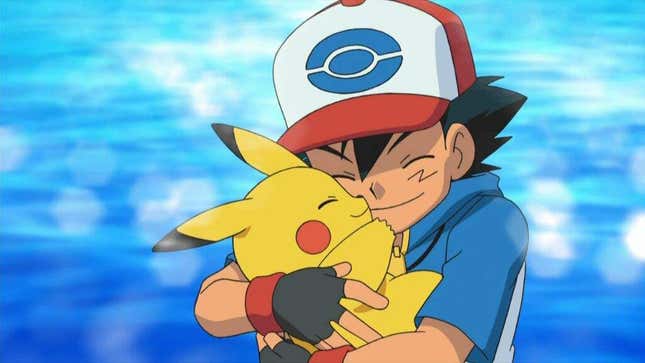
The spirit of Pokémon, which offers hundreds of monsters to collect, may be the very thing driving people to make fan games in larger numbers than you’ll see for other franchises, creators suggested.
“There’s something about Pokémon itself that makes fan games so appealing and pervasive, both creating them and playing them,” mused Voluntary Twitch of Pokémon Uranium. “I think it’s the fact that every Pokémon adventure is different...You’re always going to have a different Pokémon team, different battles, different challenges; within the framework of the game world, your story is unique. Something about that makes us want to tell each other our stories, whether through fan art, Let’s Plays, fan fiction, role-playing, or in my case, fan games. It’s all part of the Pokémon experience, but it’s something that transcends the official franchise of games, anime, and merchandise.”
Beyond video game fan works, Pokémon has also famously inspired gut-wrenching “Nuzlocke run” stories where players recount permadeath playthroughs. It’s further proof that the desire to tell deeply personal stories about magical pets blossoms in almost all aspects of Pokémon fandom.
“That idea of crafting your own narrative has entered the consciousness of every Pokémon fan from a young age, and is I think what led to the proliferation of all the fangames and ROM Hacks you see today,” Voluntary Twitch said.
The community members I spoke to know that they could make their own games instead, but they are adamant about the inspirational power of the Pokémon brand for people who may not see themselves as game developers.
“Making an original game wouldn’t have the potential legal issues that a developing a fan game has, but it would also remove the ‘heart’ of the game for a lot of the developers,” Deo said. “Renaming the project to something else, replacing the Pokémon and reworking various mechanics just aren’t a viable options for everyone.
“Fan games are a great way to learn various aspects of game design, project management, pixel art and other skills that can be applied to an original game,” Deo said. “That being said, not every developer wishes to move on to developing games full time as this is more of a hobby.”
Those that do graduate onto professional game development don’t necessarily have an easier time, though. Stephen McVicker knows this woe well. As a teenager, McVicker made elaborate Pokémon fan games that taught him the basics of game development. As an adult, McVicker makes Pokémon-inspired games professionally, but he knows better than to use anything resembling Game Freak’s art assets or brands. The problem is, others don’t play by the same rules.
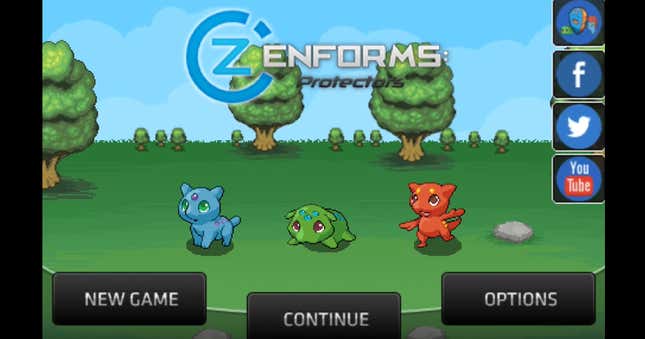
“It was a Pokemon fan game originally that helped me get into college to study game development,” McVicker said, noting that he cited his fan game experience during college interviews. “After college, I spent 2 years working hard with passion and turned the game from Pokémon to ZENFORMS.”
Zenforms is a mobile monster-collecting game that still updates with new story chapters years after release. In Zenforms, you catch, train, and battle dozens of unique creatures like you do in Pokémon, though it also also offers its own twists, such as daily challenges. Recently, McVicker has witnessed an influx of similar games sold on the mobile game storefronts, except they’re not just “influenced” by Pokémon—these games appear to use very similar artwork and models from official games:
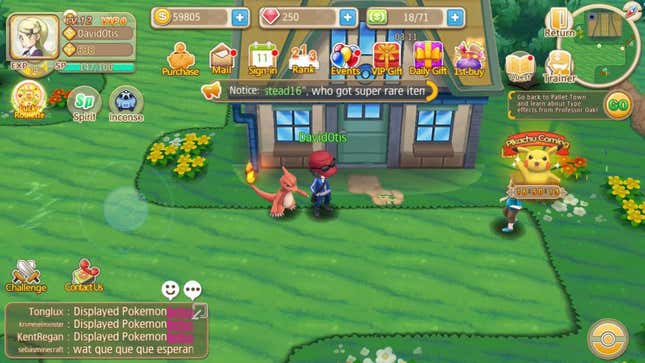
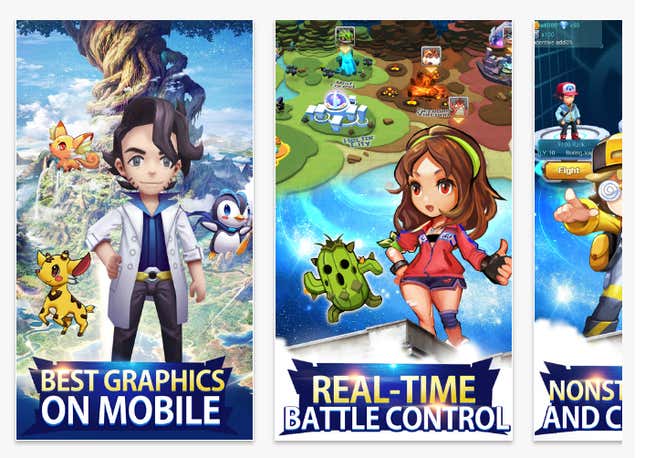
“I admit my game is niche, but these Chinese apps have crippled my game sales,” McVicker said. “Why download a game with monsters that look a bit like Pokémon when you can play with the actual Pokémon?”
Some of the games McVicker pointed out to me have been taken down by Apple, only to be reuploaded under new names, while others manage to pass through the system, microtransactions and all. Often, people who make Pokémon fan games are urged to make original games instead, but if they do, the playing field isn’t necessarily fair. Egregiously, fan games with all new monsters, mechanics, and storylines get shut down while games that look a hell lot like official Pokémon are able to make money.
Between eager fans who just want to learn game development and pay homage to Pokémon, the dangers of popularity, and the fraught reality of professional game development, the world of Pokémon fan games has become a complicated one. For folks who are embedded in the fan game community, it’s almost a distracting sideshow.
“It’s disheartening when a fan game starts getting recognition that people immediately start discussing about how Nintendo will take the project down within the week,” said Deo, a founder of Relic Castle. “We appreciate the concern and how passionate people can get about fan games, but this is something we discuss and debate very frequently within the community and would rather see discussion about the fan game in question rather than something we’ve considered dozens of time before.”
But no matter how many headlines you read, or how many comment debates ignite around Nintendo fan games, the community has faith that the culture of Pokémon will keep intertwining with fan games.
“Legal issues aside, my hope is that people will continue creating and sharing fan game content, maybe even more energized now that they have seen what can be done,” said Voluntary Twitch.
Scrolling through some fan game forums, where people are still excitedly sharing small projects they made with friends, or discussing how to make convincing “Fakemon,” I have a feeling that Pokémon Essentials will keep introducing people to game development for years to come.
